You are using an out of date browser. It may not display this or other websites correctly.
You should upgrade or use an alternative browser.
You should upgrade or use an alternative browser.
AT IT AGAIN: Paul and Mike Convert a Mid/Tall T1N Sprinter Cargo
- Thread starter mhiscox
- Start date
VanIsle_Greg
I think I need a bigger truck!
Liking the way that the counter makes it look so much more finished. Looking functional soon!!
PaulJensen
Custom Builder
(aBOVE) Still deciding which camera for Japan...I'm leaning Panasonic over Nikon...???...\
(above) Underside of table...
(above) Thinking ahead to the ceiling...
(above) Up to now, the doors were simply rounded over MDF...The Engal Fridge vents got me thinking another way...Close tolerance cut-out, Poly-U adhesive, Paint prep...
(above) All door but one will be louvered...
(above) Primary focus for the day was Frame Kits for Japan...It's done, that's good...Departure the 13th...
(above) L>R...Toilet, Sink, Rear...
(
_hein_
Observer
Can you tell me where you got your tanks? I think one of those might fit in my galley cabinet.
Specifically interested in the top tank in this picture.
Specifically interested in the top tank in this picture.
Last edited:
PaulJensen
Custom Builder
Can you tell me where you got your tanks? I think one of those might fit in my galley cabinet.
Specifically interested in the top tank in this picture.
The tanks are made by Pellandent...
The blue water tank is model # 09-RV68W with a capacity of 20 gallons...
The grey water tank is model # 06-21521 with a 6.7 gallon capacity...
_hein_
Observer
Thanks for the tank info. I purchased some tanks from Custom Roto-Molding who have a facility in Springfield, OR. Today, I ordered a tank from the exceptionally nice lady at Pelland Industries.
Last edited:
PaulJensen
Custom Builder
#26
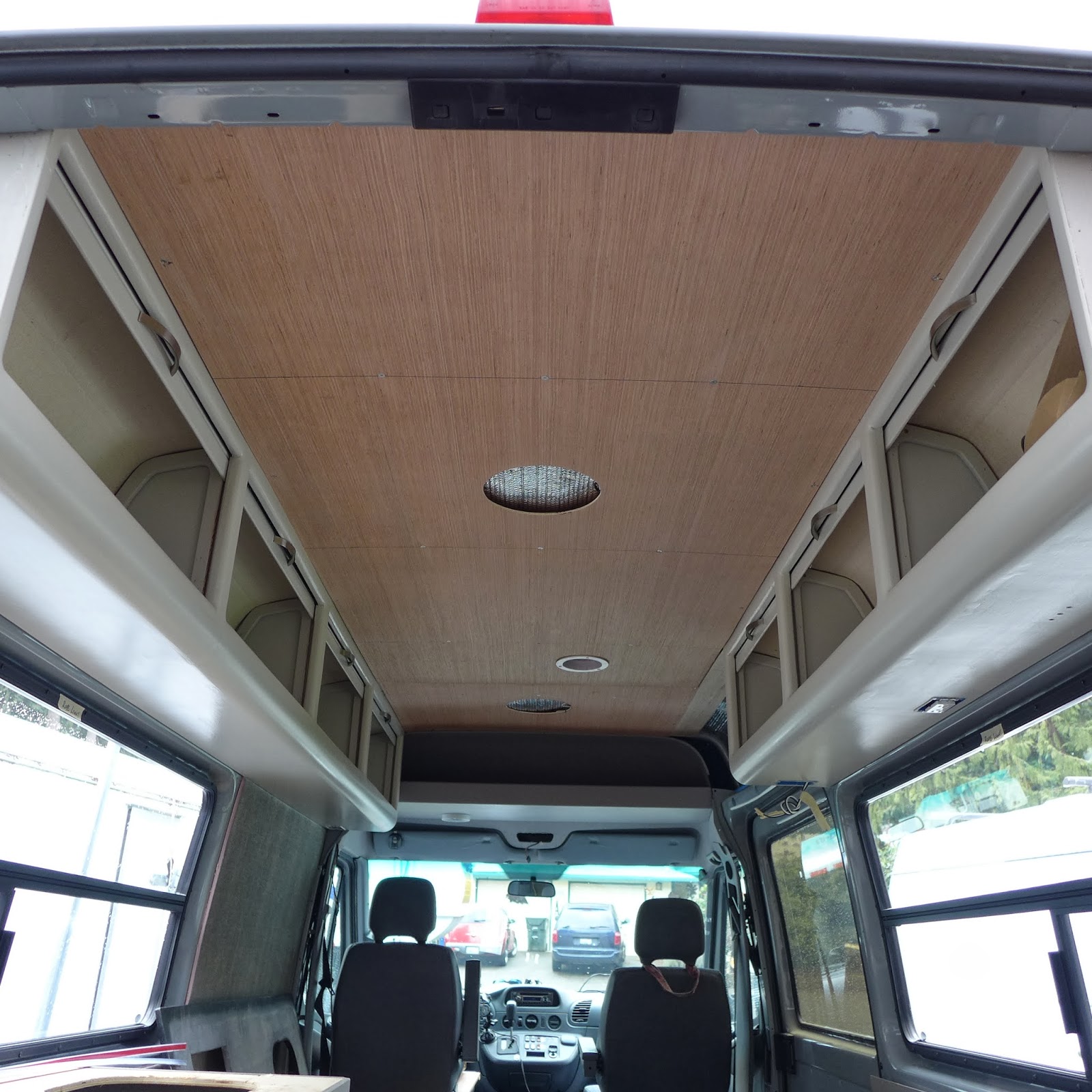
(above) Getting the ceiling done was high on the priority list...The pre-wiring for the lights was covered with 1/4" ply...
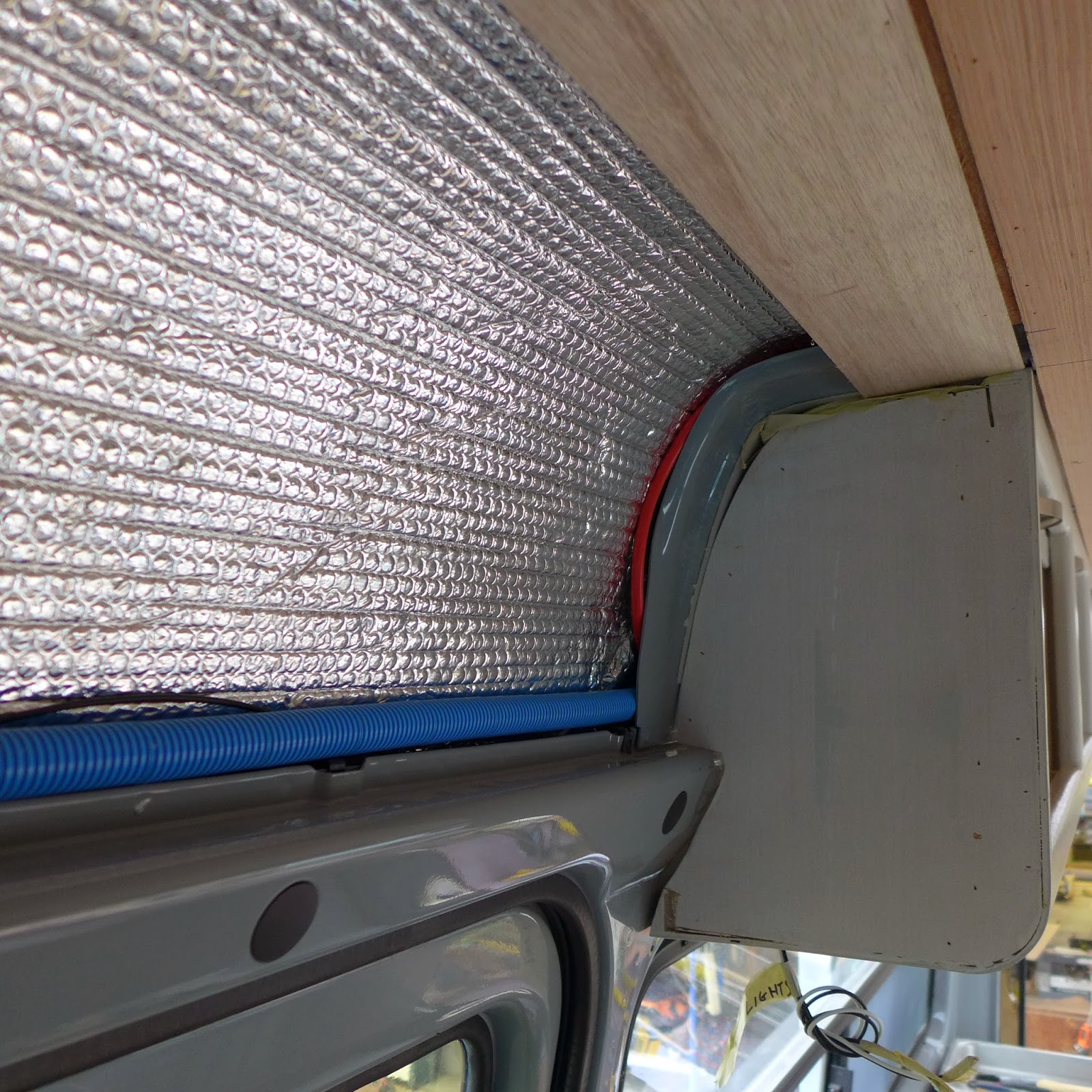
(above) If some wiring needs to get pulled, later, there's blue conduit with a pull wire in it...
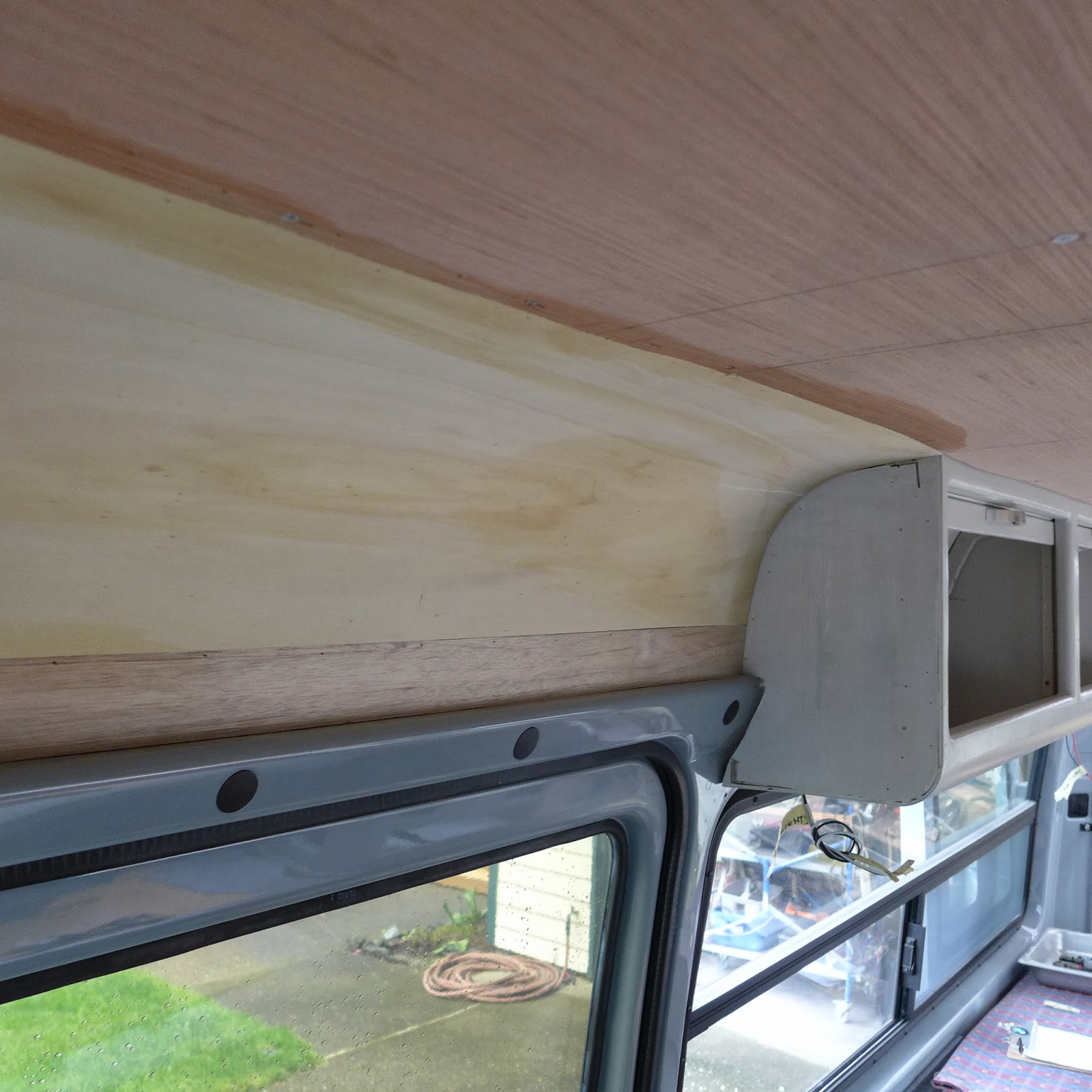
(above) Keeping the curve thing going, bending ply was fitted, glued, nailed and screwed to the roof framing and plywood backing...
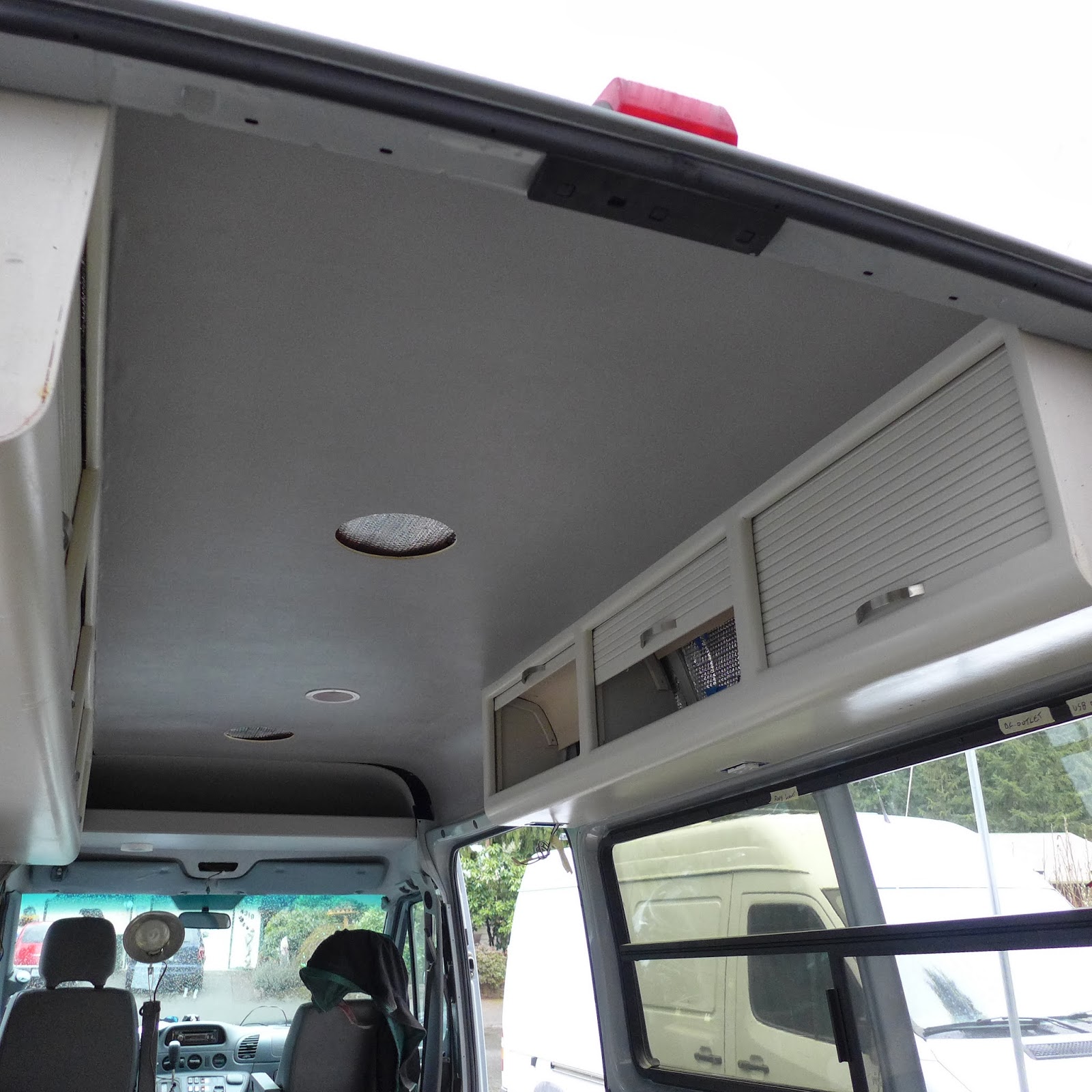
(above) The fabric was laid out on my biggest table, accurate ceiling measurements were laid out then cut with a knife...Then the fabric was rolled so it could simply roll onto the plywood backing, starting at the rear...Adhesive was spread flat onto the ceiling with an 11" drywall knife, then pulled even with a notched trowel...Without apprehension or helping hands, the fabric was somehow installed on the ceiling...Move fast, don't stop moving, and above all don't overthink it...
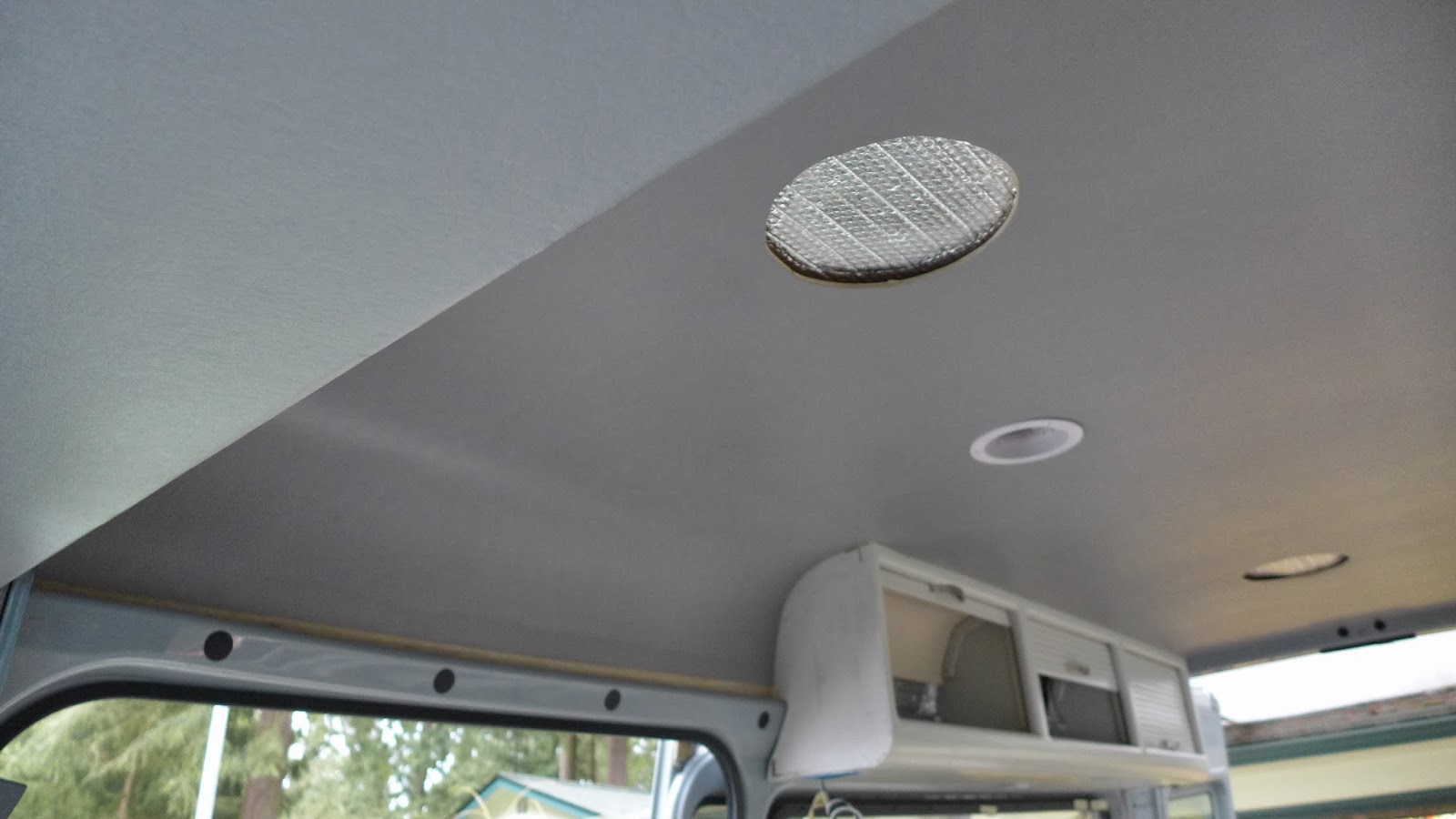
(above) One of the hardest things I've ever done...One shot, nailed it...
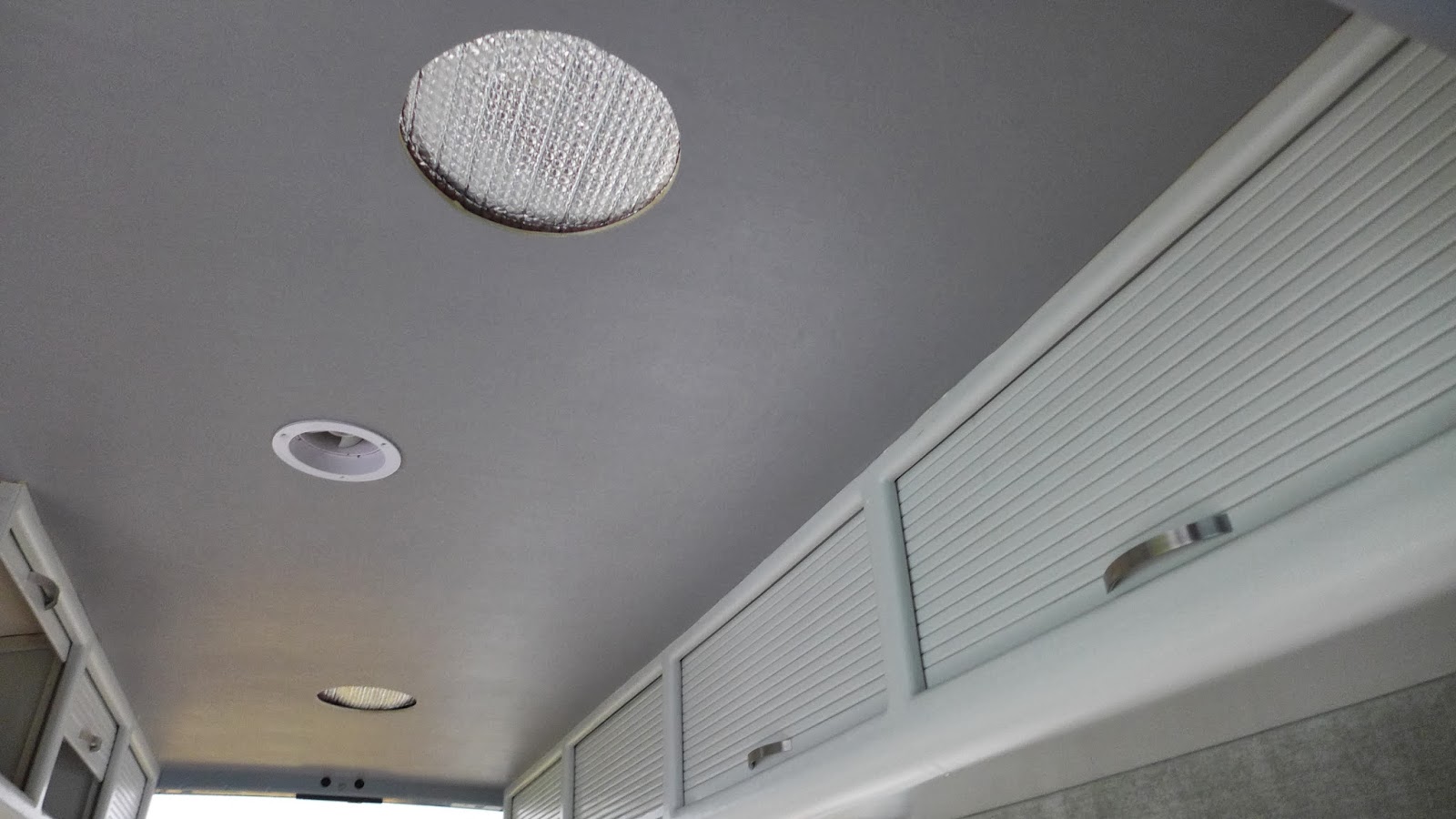
(above) Flat lay, the only knife work was the round cut-outs...No trim, maybe a bead of caulk...After getting the fabric on the ceiling, flattening, squeegeeing, rolling, wiping and repeating the process went on for a few hours...There were two 1500 watt heaters cranked to accelerate the set-up time...
(above) Getting the ceiling done was high on the priority list...The pre-wiring for the lights was covered with 1/4" ply...
(above) If some wiring needs to get pulled, later, there's blue conduit with a pull wire in it...
(above) Keeping the curve thing going, bending ply was fitted, glued, nailed and screwed to the roof framing and plywood backing...
(above) The fabric was laid out on my biggest table, accurate ceiling measurements were laid out then cut with a knife...Then the fabric was rolled so it could simply roll onto the plywood backing, starting at the rear...Adhesive was spread flat onto the ceiling with an 11" drywall knife, then pulled even with a notched trowel...Without apprehension or helping hands, the fabric was somehow installed on the ceiling...Move fast, don't stop moving, and above all don't overthink it...
(above) One of the hardest things I've ever done...One shot, nailed it...
(above) Flat lay, the only knife work was the round cut-outs...No trim, maybe a bead of caulk...After getting the fabric on the ceiling, flattening, squeegeeing, rolling, wiping and repeating the process went on for a few hours...There were two 1500 watt heaters cranked to accelerate the set-up time...
PaulJensen
Custom Builder
#27

(above) The 110 volt AC overhead lights were wired and tested...Love these things...Thin, light, broad light dispersion...Mike picked these out and he couldn't have made a better choice...!!!...
The undercabinet lights were installed and combined with the entirety of the design choices, this looks less like a van, than the interior of a private jet...
The long awaited call that the cushions were ready got me out of the shop and after stopping at the hardware store for some needed little things, I made it to downtown Olympia and Urban Upholstery...The bed and bolsters were perfect, but the new jump seat cushions were a bit big so they will be fine tuned and ready next Monday...Sorry no pictures yet...

(above) The old electrical distribution panel when I got the van...
http://1.bp.blogspot.com/_RJG8jKQeQIU/TAl40M7p78I/AAAAAAAAAZw/AWuau7f9VUI/s400/Wire+Diagram+******.jpg
(above) "This is actually just 1 page of 20 from the electrical plan given to me. Although I have been electrocuted more times than say, I don't know, Ben Franklin during his storm kite-flying days, I am by no means qualified to do any sort of electrical engineering work. I have the burn scars to prove it. Now, this is a simple as far as plans go, just how difficult can it be to wire the damn thing up and get her working? Well as I slowly turn my gaze from the black & white, wiring diagram to peer inside the oil-stained cardboard box filled with a tangled rat's nest of wires, the sound of crickets echoes inside my vast and cavernous head."...from Oil & Water Blog

(above) I've been pushing real hard for a few weeks and the thought of the electrical connections have been intimidating...Combine that with an upcoming trip to Japan (next Thursday) to help five non-English speaking surfers build wood boards, it feels that wiring the electrical panel is something I don't want to do...Too mentally taxing...My dreams have been a recurring vision of the picture above...I could sub it out, but I'm sure I would be less than happy with an unknown 'expert' doing the work...So I told myself to slow down for a few days, figure it out and do it right...

(above) Some online research provided inspiration...
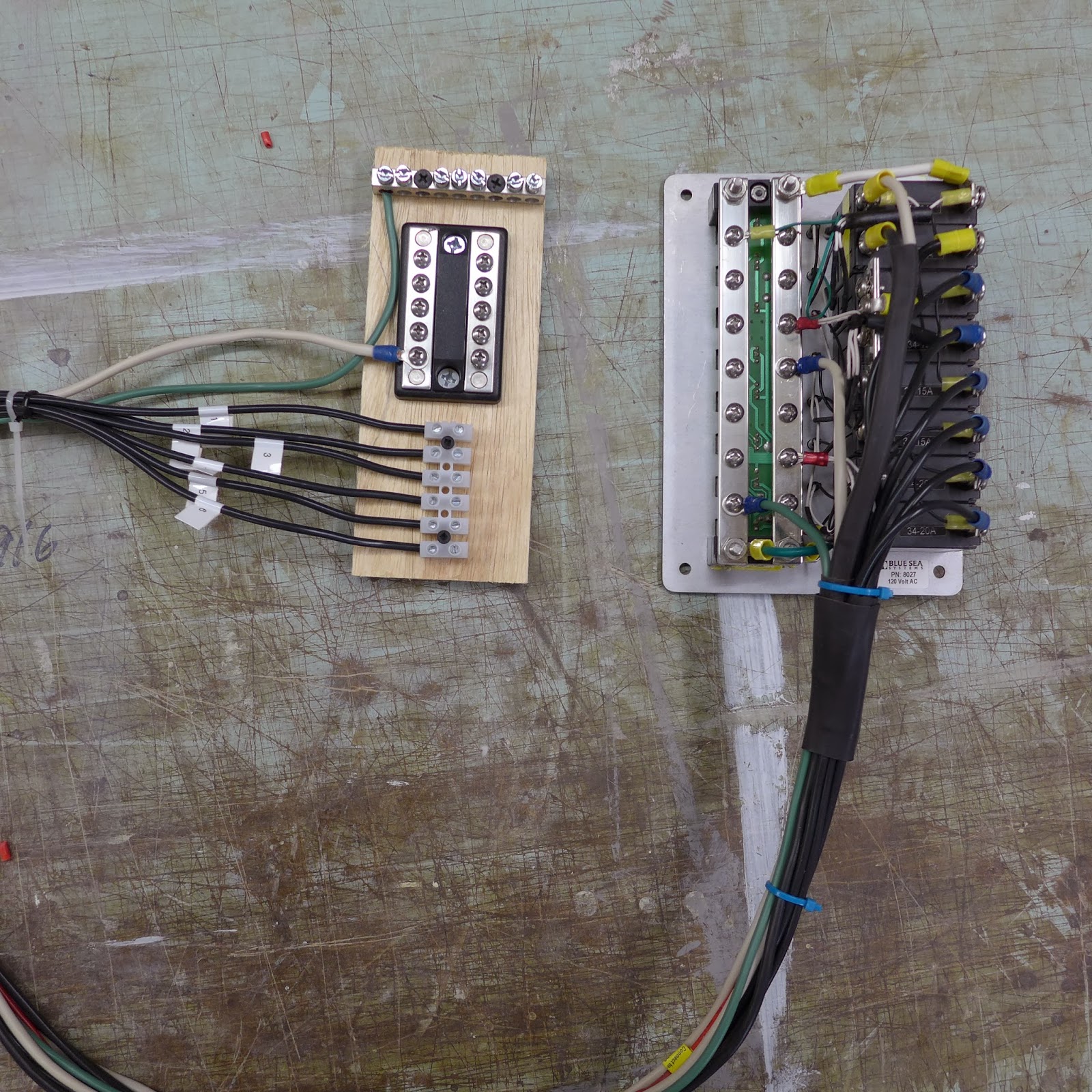
(above) My plan is to make no component to panel connections inside the 'kitchen cabinet'...The panels, AC & DC, will be wired with #10 wire, the wires loomed, then fed into the space under the bed where the inverter is...There the component connections will be made and available for service or changes...Pictured is the AC panel and connection block...
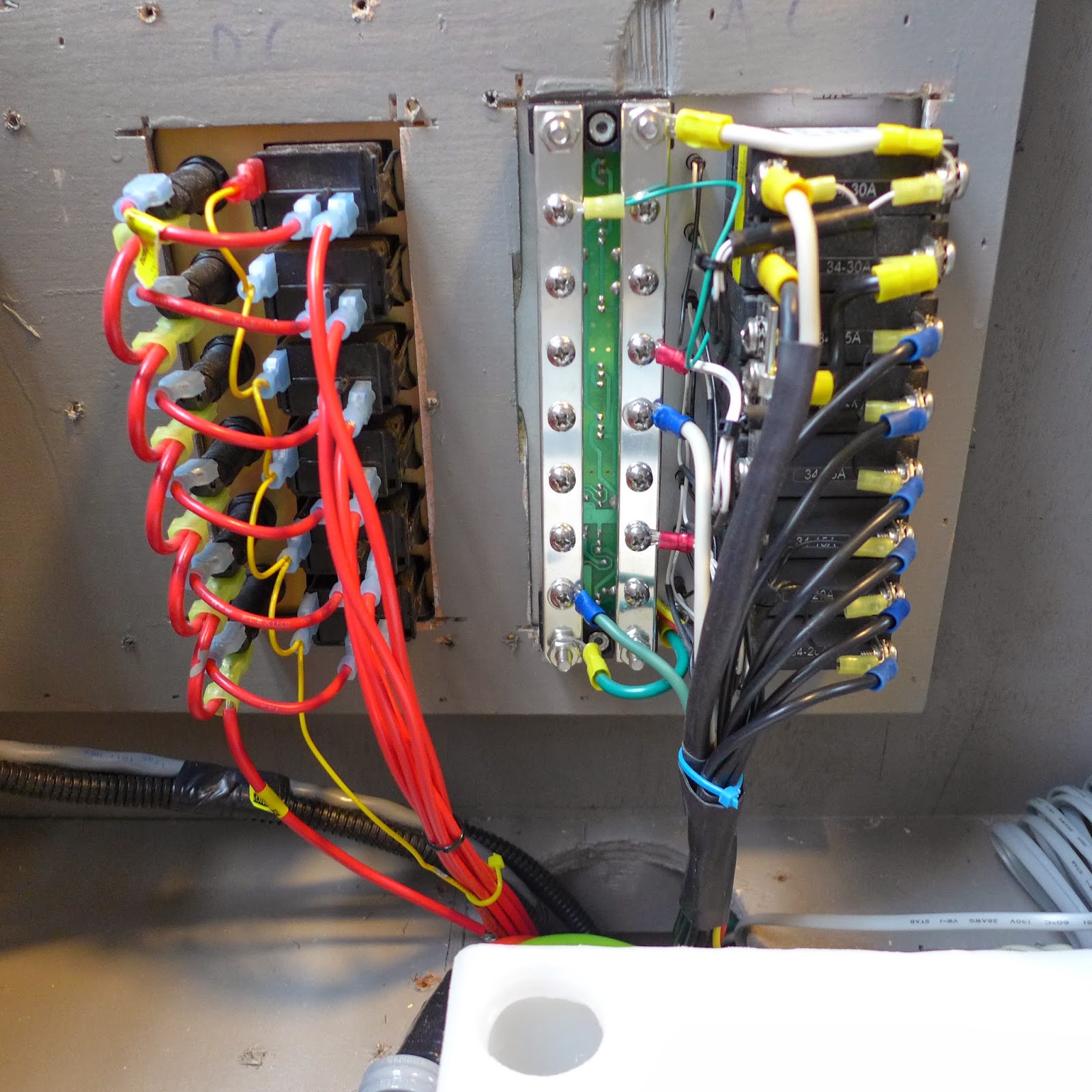
(above) Both panels loosely placed...Next up is the underbed connections...Stay tuned...
(above) The 110 volt AC overhead lights were wired and tested...Love these things...Thin, light, broad light dispersion...Mike picked these out and he couldn't have made a better choice...!!!...
The undercabinet lights were installed and combined with the entirety of the design choices, this looks less like a van, than the interior of a private jet...
The long awaited call that the cushions were ready got me out of the shop and after stopping at the hardware store for some needed little things, I made it to downtown Olympia and Urban Upholstery...The bed and bolsters were perfect, but the new jump seat cushions were a bit big so they will be fine tuned and ready next Monday...Sorry no pictures yet...
(above) The old electrical distribution panel when I got the van...
http://1.bp.blogspot.com/_RJG8jKQeQIU/TAl40M7p78I/AAAAAAAAAZw/AWuau7f9VUI/s400/Wire+Diagram+******.jpg
(above) "This is actually just 1 page of 20 from the electrical plan given to me. Although I have been electrocuted more times than say, I don't know, Ben Franklin during his storm kite-flying days, I am by no means qualified to do any sort of electrical engineering work. I have the burn scars to prove it. Now, this is a simple as far as plans go, just how difficult can it be to wire the damn thing up and get her working? Well as I slowly turn my gaze from the black & white, wiring diagram to peer inside the oil-stained cardboard box filled with a tangled rat's nest of wires, the sound of crickets echoes inside my vast and cavernous head."...from Oil & Water Blog

(above) I've been pushing real hard for a few weeks and the thought of the electrical connections have been intimidating...Combine that with an upcoming trip to Japan (next Thursday) to help five non-English speaking surfers build wood boards, it feels that wiring the electrical panel is something I don't want to do...Too mentally taxing...My dreams have been a recurring vision of the picture above...I could sub it out, but I'm sure I would be less than happy with an unknown 'expert' doing the work...So I told myself to slow down for a few days, figure it out and do it right...

(above) Some online research provided inspiration...
(above) My plan is to make no component to panel connections inside the 'kitchen cabinet'...The panels, AC & DC, will be wired with #10 wire, the wires loomed, then fed into the space under the bed where the inverter is...There the component connections will be made and available for service or changes...Pictured is the AC panel and connection block...
(above) Both panels loosely placed...Next up is the underbed connections...Stay tuned...
PaulJensen
Custom Builder
#28
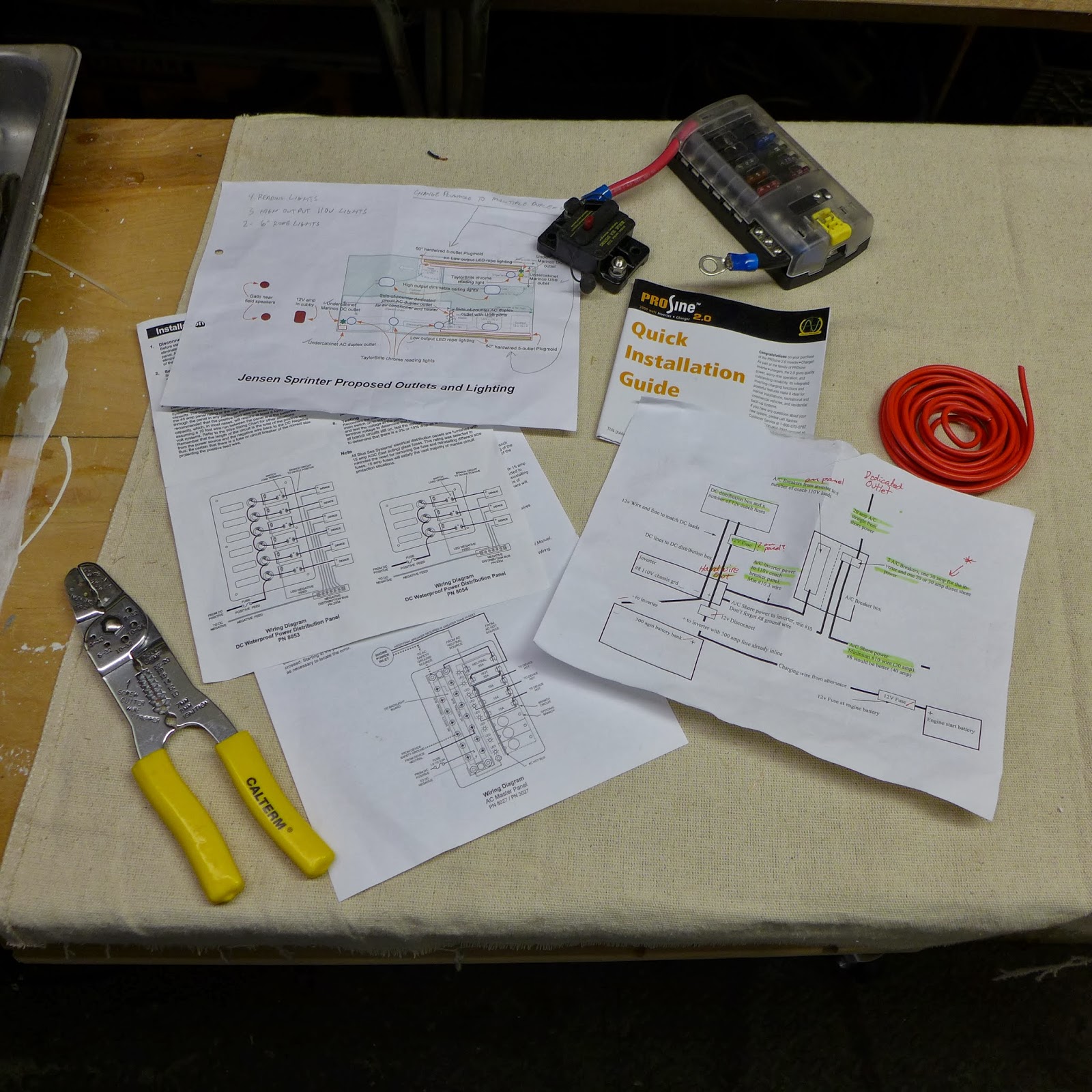
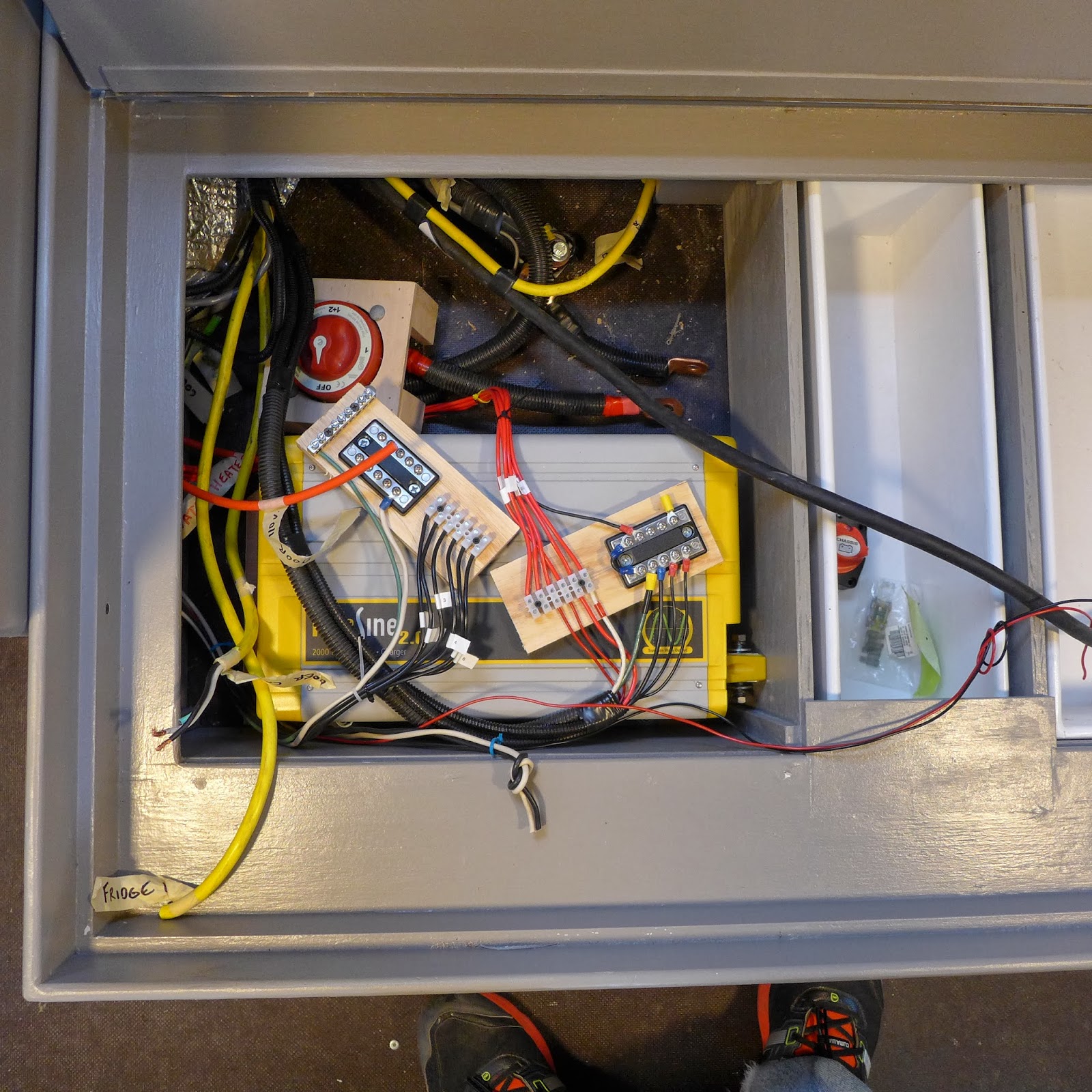
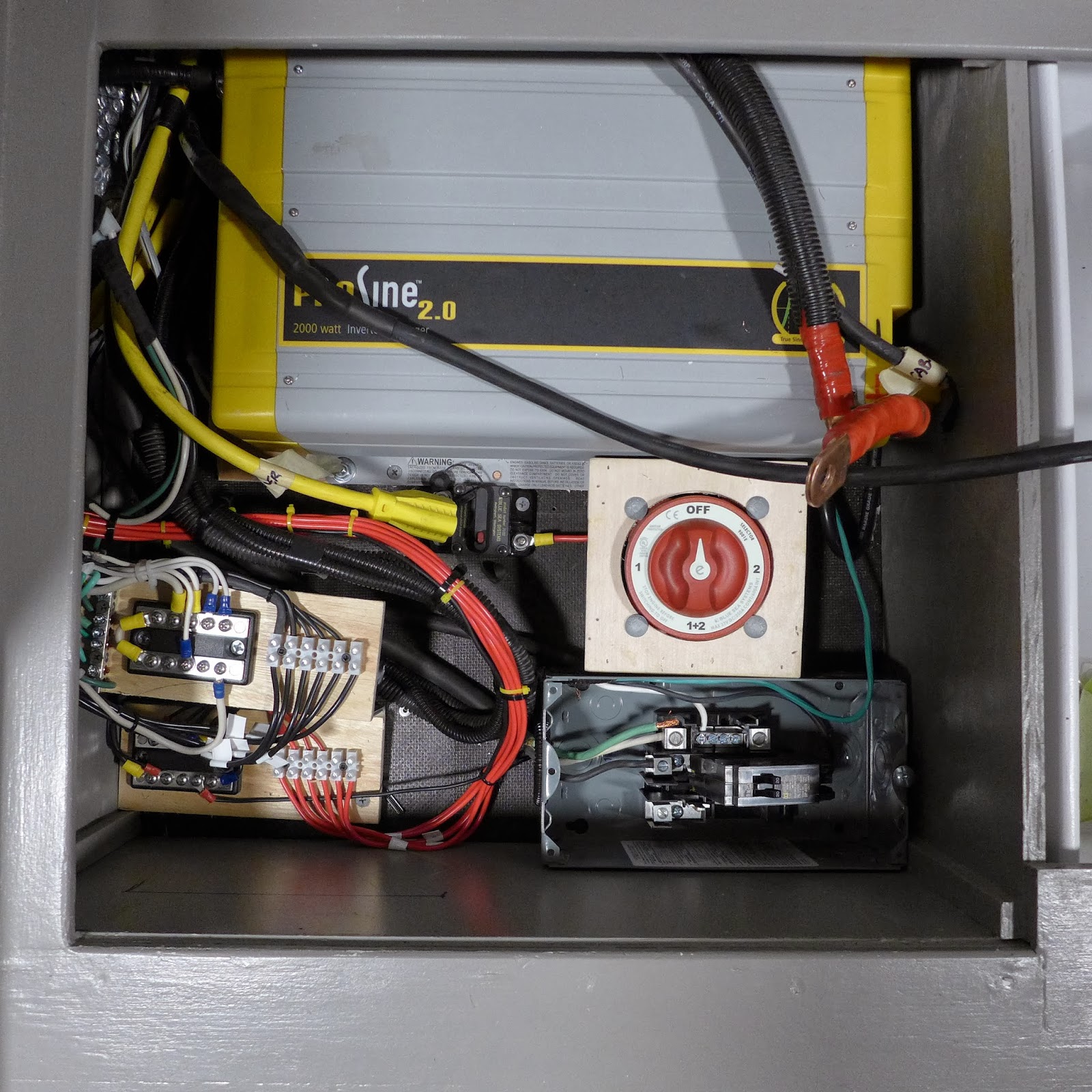
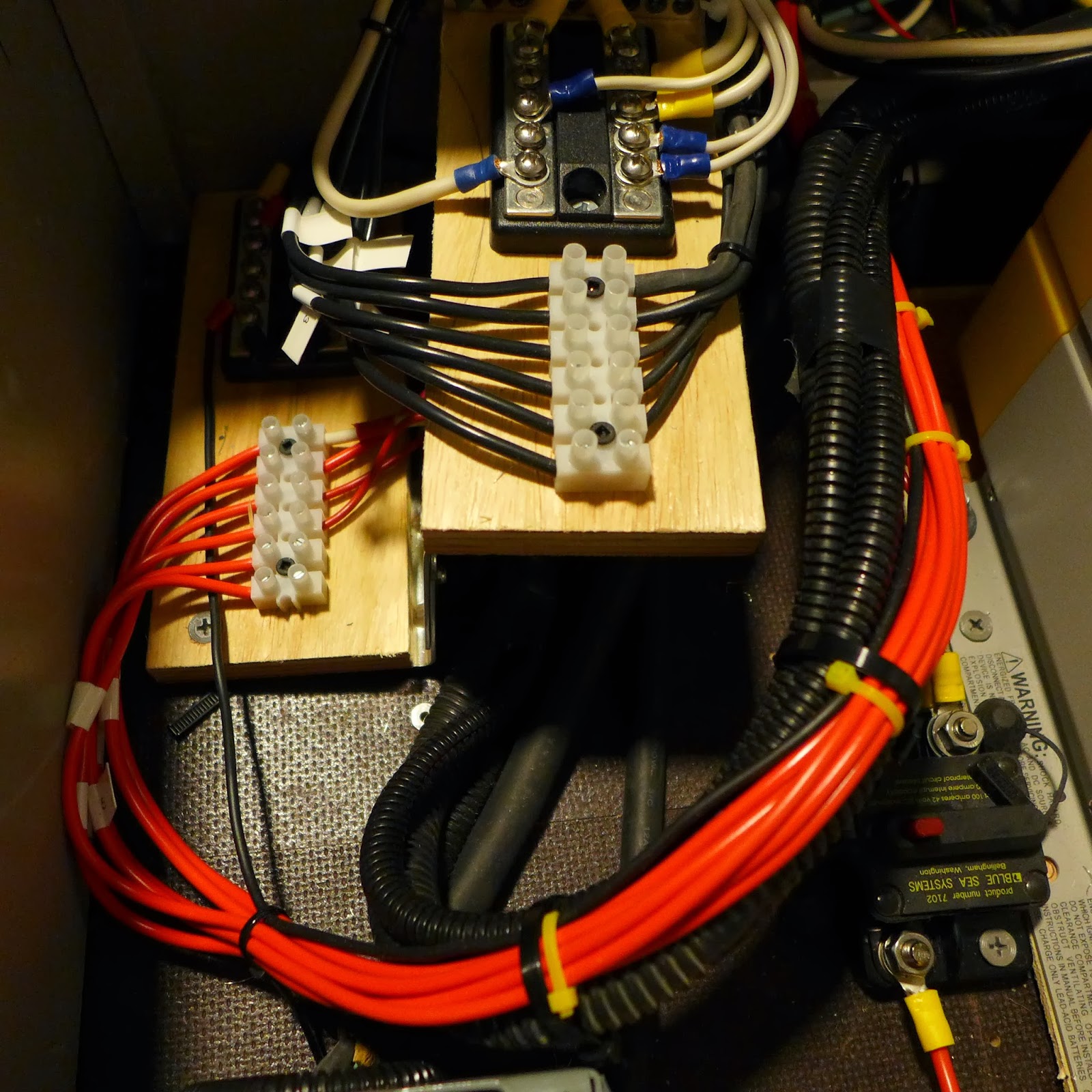
Cole
Expedition Leader
Curious why so many things that are 110V??
They make so many great lights and appliances now that run off of 12v. Seems like it would eliminate a lot of electrical wiring and loss at an inverter. Run everything 12v then replenish the batteries with solar and/or a battery charger that can be plugged into shore power when needed.
They make so many great lights and appliances now that run off of 12v. Seems like it would eliminate a lot of electrical wiring and loss at an inverter. Run everything 12v then replenish the batteries with solar and/or a battery charger that can be plugged into shore power when needed.
mhiscox
Exp. Leader Emeritus
A fair question, but I've done this a lot and feel that there are still performance issues with 12 volt lighting and, especially, appliances. Certainly the microwave, water heater, space heating and induction cooktop are not candidates for DC; the use of AC for these tasks has eliminated the cost of and effort to plumb propane or diesel appliances.Curious why so many things that are 110V??They make so many great lights and appliances now that run off of 12v. Seems like it would eliminate a lot of electrical wiring and loss at an inverter. Run everything 12v then replenish the batteries with solar and/or a battery charger that can be plugged into shore power when needed.
As for the lighting, the majority of the lights are 12V LEDs, but the cost of getting the same lumens out of DC lights as out of the AC ceiling lights would require a much more expensive fixture. I've owned many good LED lights, and the availability of warm white LEDs has helped a lot, but the best lights I've found at a reasonable cost are still AC-supplied.
There are other things that will be glad for the AC. The laptop computer most likely to be used needs charged at 19 volts, which works with the included AC transformer but would require a special DC charger I've no idea if they even make. AC fans are worlds better than DC fans. And there's no reasonable DC air conditioner, whereas an AC unit can be had for a few hundred dollars.
When we are boondocking, virtually none of the AC appliances will be used . . . occasionally the microwave maybe, but none of the other stuff. We'll carry portable propane appliances to use then. About the only responsibility of the inverter will be the 16-watt ceiling lights and charging personal electronics. There won't be any attempt to run resistance appliances off the inverter. All in all, with this setup, we'll live very comfortably if we have shorepower (or generator power) available, but we're not really any worse off when away from an outlet.
FOR GENERAL INFORMTION: As many, but maybe not all, know, the LED lights all run on DC current. The issue is whether you supply them with something between 12.1 and 12.8 volts from the house battery system, or whether you feed AC--often anything between 80 and 250 volts--to the included transformer which sends a precise output to the light. Having the exact design voltage (12.42 volts in the case of the two big ceiling fixtures) will give a brighter, more consistent light, and will eliminate the (often unnoticed) strobing that LEDs have when they're unhappy with their supply voltage.
Last edited:
Cole
Expedition Leader
Thanks for the explanation. Not sure I agree with the assessment, but thanks. :coffeedrink:
I've stayed in an "Earthship" and other "Green homes" that run everything they can on 12v systems. I've been very impressed with the idea on not "having"'to use AC where it's not needed.
Guess it's just me, I don't see the need to emulate the home experience when out exploring. Being able to self sustain without shore power or bringing along extra appliances as you mentioned seems like the point of a self build camper to me.
But, I'll still follow along and admire the work and ask questions and home to learn more! Thanks guys!:friday:
I've stayed in an "Earthship" and other "Green homes" that run everything they can on 12v systems. I've been very impressed with the idea on not "having"'to use AC where it's not needed.
Guess it's just me, I don't see the need to emulate the home experience when out exploring. Being able to self sustain without shore power or bringing along extra appliances as you mentioned seems like the point of a self build camper to me.
But, I'll still follow along and admire the work and ask questions and home to learn more! Thanks guys!:friday:
mhiscox
Exp. Leader Emeritus
We really don't have any disagreement. Remember that I am also fortunate enough to own this:Guess it's just me, I don't see the need to emulate the home experience when out exploring.

which is totally self-dependent, being solar/DC-powered and using propane for cooking and petrol for space heating. It does not have any of the "duplicate the home" appliances of our current Sprinter build.
But the merits of the XV-JP are somewhat lost on my recently-retired wife, who actually would like a camper with all the comforts of home for the extended trips she envisions us taking. She rejected full-on motorhomes for their poor fuel economy and the need to tow a second vehicle to be able to get around, so this is the best compromise we can manage.
Also, recognize that my earlier Sprinter conversion was likewise shorepower-independent. The new owners do their backcountry mountain biking trips of up to a month out of it with no issues.

So, as with everyone's vehicle selection, you're just seeing the optimizing of a build for the predominant use, which in this Sprinter's case will involve a lot of campgrounds, but we'll still be able to handle an unpaved road and boondock for a day or two at a time.
Similar threads
- Replies
- 9
- Views
- 2K
- Replies
- 22
- Views
- 7K
- Replies
- 49
- Views
- 31K
- Replies
- 171
- Views
- 49K
